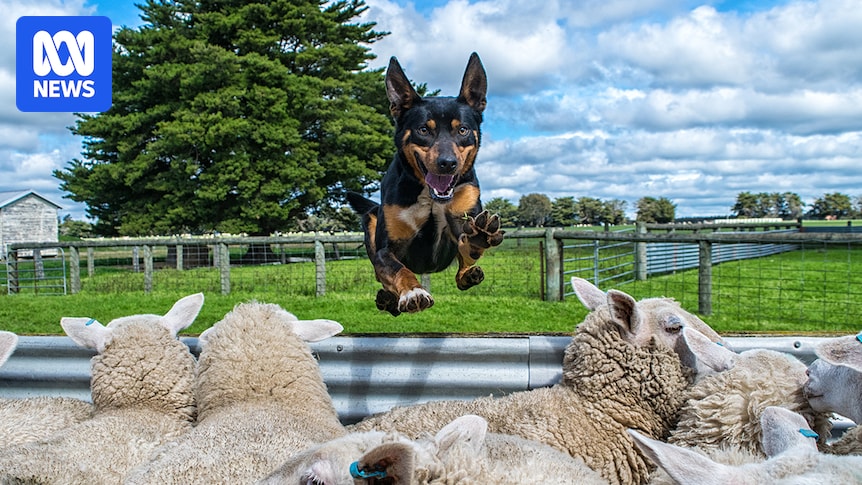
A recent study by ANZ has revealed that Australia’s working farm dogs contribute an impressive $3 billion to the national economy. This valuation highlights the critical role these animals play, particularly as farmers face challenges in hiring and retaining skilled labor.
The study estimates that the country’s 270,000 working livestock dogs provide economic benefits comparable to Australia’s beef exports to the United States for the 2023-24 period. According to Michael Whitehead, ANZ’s executive director for food, beverage, and agribusiness, the $3 billion figure can be dissected into several impactful components.
“Roughly $800 million is what is being saved in labor by the sector by having dogs there rather than having people,” Mr. Whitehead stated.
The Economic Impact of Working Dogs
Whitehead further elaborated that the presence of working dogs boosts regional economies by approximately $600 million, thanks to the increased efficiency on farms. This efficiency translates into lower vehicle costs, the ability to manage larger herds, and various on-farm advantages.
“It’s hard to imagine having enough people to run around the sheep and cattle of Australia, in the yards and the paddocks,” he explained. “If we didn’t have [the dogs], it would be just a completely different landscape for agriculture, for the regional towns, for the way the whole food supply chain works … and even the export markets as well.”
Rising Demand for Working Dogs
The demand for working dogs has surged over the past decade, according to Karen Stephens, president of the Casterton Kelpie Association. She attributes this increase to the scarcity of available farm labor, prompting farmers to rely more heavily on their canine workforce.
“[The dogs] sit at the back door waiting, they’re keen to work and they always want to work, and they’ll work from sun-up to sundown, they don’t take holidays, and they don’t take sick leave, so they’re pretty reliable when it comes to that,” Stephens said.
The value of these dogs is reflected in auction prices. In 2021, a dog sold for a record $35,200 at the Casterton Kelpie Auction in Victoria. This record was surpassed the following year when a New South Wales kelpie fetched $49,000.
“That might sound like a huge amount for a dog, but when you think of everything that the animal is doing and what I would be paying a number of humans to do, and all the equipment that they would need … then it really is something that’s vital for a business and for big farms,” Mr. Whitehead said.
The Importance of Training and Genetics
Tom Austin, spokesman for Elfinvale Stud Kelpies, emphasized that the high prices for working dogs reflect years of training and their indispensable role in the red meat and sheep industries.
“The genetic potential is critical, like in any breeding … having the dogs with the potential to [stay] back, to show the eye to work,” Austin noted.
With record-high stock prices, farmers are increasingly recognizing the value of investing in well-trained dogs. “People are now willing to pay large amounts of money. We’re talking $15,000 and above for dogs that are ready to actually go to work,” Austin added.
Looking Ahead
As Australia’s agricultural sector continues to evolve, the reliance on working dogs is expected to grow. These animals not only enhance farm productivity but also support the broader economic framework of regional communities. With ongoing advancements in breeding and training, working dogs will likely remain a cornerstone of the agricultural economy, providing both tangible and intangible benefits to farmers across the nation.






